
Natural Pork Production II has a
strong manure management team in place, using the services provided by
applicator Puck Custom Enterprises and nutrient manager AMVC Management
Services to get the job done right.
Natural Pork Production II has a strong manure management team in place, using the services provided by applicator Puck Custom Enterprises and nutrient manager AMVC Management Services to get the job done right.
When it comes to manure management, it’s always important to have the right application equipment out in the field. But it seems that it’s just as important to have the right people using that equipment—and have everyone communicating.
“In addition to the equipment side of operations, we really believe a lot of what we do—and how we do it—is based on communications,” says custom applicator Ben Puck, of Puck Custom Enterprises of Manning, Iowa. “Everyone on our crew is connected with either a radio or mobile, and we’re using that equipment all the time. If there is a question about how we are doing or what needs to be done next, information is shared almost instantaneously.”
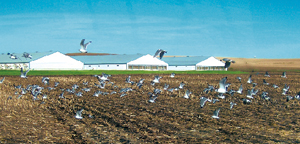 Applicator Puck Custom Enterprises has grown significantly in recent years. The company now applies more than 100 million gallons a year, about 30 million gallons of that for Natural Pork Production II. Applicator Puck Custom Enterprises has grown significantly in recent years. The company now applies more than 100 million gallons a year, about 30 million gallons of that for Natural Pork Production II. |
The importance of communications also applies to one of Puck’s larger customers, Natural Pork Production II (NPP II), which has extensive hog operations in Iowa, and farms in Minnesota, Ohio, Indiana and Texas. The company was founded in 1998 by Gary Weihs with a single 2,800-sow facility outside Harlan, Iowa, and has grown significantly since then. It currently has 55,000 sows in its operations in the US. The company is also expanding into Russia and Romania.
Both NPP II and Puck are on the same page when it comes to an overall approach to manure management. “We share the same philosophy as NPP II,” explains Puck. “We need to protect the environment. We need to use manure as a nutrient, not as a waste product, and target it to the crops that can most benefit from its application and uptake.”
“We believe there is a lot of value in the manure and we handle it accordingly,” adds Mark Zaccone, one of NPP II’s operating partners. “We work with local farmers who recognize that same philosophy.” Accompanying this is a commitment to protect and, if possible, enhance the environment, as well as employing technology—and using it to the fullest extent. “We don’t want to be cutting corners—we want the job done right,” says Zaccone. Along with that, they want to communicate to neighbors—and the communities they operate in—that they are doing it right.
From the start, company founder Weihs’ approach to getting manure management right has been to find experts in the field and then hire them as contractors. That’s how NPP II started doing business with both Puck Enterprises, which handles much of the company’s manure application, and AMVC Management Services, LLC, of Audubon, Iowa, which oversees nutrient management.
“With the 55,000 sows we have right now, we’re getting some critical mass that will allow us to continue to stay in the forefront of technology,” says Zaccone. Having worked with Puck Enterprises and AMVC for years, NPP II has full confidence in their respective abilities as applicators and manure managers. “I think we’ve got a top notch team,” adds Zaccone.
On NPP II’s behalf, AMVC has established relationships with a large number of farms in NPP II’s operating areas. “These farms have now ingrained manure into their soil fertility program,” explains David Wittry, of AMVC. “They look first to what nutrients the manure can provide, and if they need additional nutrients, they will fill in with commercial fertilizer. Essentially, we work with them from the crops’ standpoint—what crops are going to be grown and what the nutrient requirements are going to be.”
Wittry notes that with rising fertilizer prices, it’s been easier to drive home the inherent nutrient value of manure. “Some farms that have chosen not to use manure in the past are now coming to NPP II, to see if they have any extra manure,” he says. And depending on the farm site, they might have some excess—but in most cases, the manure is largely spoken for.
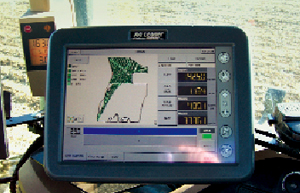 The AgLeader mapping systems (left) on the tractors are connected to Krohn flow meters. The AgLeader mapping systems (left) on the tractors are connected to Krohn flow meters. |
AMVC uses a modified ArcView software program to track and manage the manure. “I’ve customized the ArcView system we have—it’s a very powerful tool for us,” says Wittry. “I can pull in the maps that Ben Puck sends me of the applications, and we can have up to 30,000 points across a field where we can plug in the nutrient value of the manure that was applied.”
Well before that, however, AMVC prepares detailed application maps on its system for Puck Enterprises. “Once we get a plan, we take a systems approach, how much hose it is going to take, are we going to need to do any hauling with wagons or semis, and generally put together the tools and work strategy that is going to get the job done,” explains Puck.
Approximately 80 percent of Puck’s manure application is done with drag hose systems. Equipment includes four Houle 4,800-gallon tanks and a 2505 Terra-Gator with a 5,000-gallon capacity, and a 3104 Terra-Gator with a 4,200-gallon capacity. Puck owns a 6,500-gallon semi-tanker and if more hauling equipment is required, the company can hire up to an additional four units from a neighboring applicator.
In a typical application situation, there will be a tractor agitating at the lagoon with Balzer or Houle equipment. From there, Cornell 14-inch and 17-inch high pressure pumps move the manure through a six-inch feeder line that will go out to one of three tractors: they have two John Deere 8310s and a Deere 9420, all equipped with Krohn flow meters connected to AgLeader mapping systems on the tractors. They use hose from Angus, Mandles, Balzer and Snap-Tite, along with a Dietrich 60 injector, with seven shanks, and a DMI 2500 no-till, in line ripper, with 11 shanks.
“It might not apply in other areas, but we believe in vertical tillage, and the DMI 2500 handles that well and puts the nutient where it needs to be. It minimizes both soil distrubance and any chance of run-off.”
The DMI and Dietrich work well for them, but Puck notes what equipment a manure applicator uses depends entirely on their specific operating conditions and area. “I don’t think there’s a magic bullet out there in terms of one single tool. For us, we’re looking for something that vertically tills and keeps the manure stable. We’re working on some highly erodeable land, so we try to minmize the impact on the soil as best we can.” Handling all of this equipment are very experienced, and capable, operators, he adds.
Puck Enterprises has grown signfi-cantly in recent years, and its equipment base has also grown. The company now applies more than 100 million gallons a year, about 30 million gallons of that for NPP II. It’s set up to move manure further, with 10 miles of hose, and jump pumps.
“We can now work a lot larger radius around a hog site,” says Puck. “I think it helps to give our customers like NPP II more options on how to utilize their manure strategically.”
Having a solid manure management infrastructure in place proved to be particular helpful for NPP II several years back, when the company took over a closed hog operation in Indiana. It had been a 3,000-head farrow-to-finish operation, with several manure holding tanks and an underground pipeline that ran out to an 11 million-gallon lagoon. A drag hose system tapped into extensive piping on the 2,000 acres around the farm.
On taking over the operation, one of NPP II’s first calls was to Puck Enterprises, to help get the manure management system on the farm in top shape. The system needed addressing in a number of areas. The concrete manure pits under the barns required work, and were reinforced. And some of the pipe transporting manure from the barns to the holding tanks was replaced. Some of the changes were quite basic, such as installing a flow meter at the lagoon.
All through this, Puck worked closely with the Indiana Department of Environmental Management (IDEM), and often went over and above state requirements. For example, the tile lines required nitrate testing every four hours, and they were doing the tests every two hours. “All the way along, we worked with IDEM and let them know exactly what we were doing,” says Puck. “But overall, we didn’t do things much differently there than we would do in Iowa.”
That said, since they were working out of their normal operating area, Puck looked for local knowledge, and found it in spades in Mike Veenhuizen and Jeff Rodibaugh of Livestock Engineering Solutions, of Greenwood, Indiana. Livestock Engineering Solutions provides livestock producers with consulting services on environmentally-sound livestock systems. The company’s focus is on helping producers design and implement livestock systems that address air, water, manure, and facility management. Local farmer Joe Fry was also an important part of the support. “With their help, we were able to make re-working the farm a success,” says Puck.
While the system and equipment were now in place on the Indiana farm, there was a lot of work to be done on the community relations side, notes NPP II’s Mark Zaccone. The company’s Gary Weihs and Ron Beach went to the town and met with a local enviromental group that had been monitoring the farm’s operations under its previous ownership.
“At the end of the meeting, Gary offered to buy testing equipment the group could use to monitor the farm’s manure management performance—we wanted to assure them that we were committed to cleaning up the farm,” Zaccone explains. “And we let them know that we wanted to review how things were going with the farm on an ongoing basis.”
At the same time, they were also meeting with the farm’s neighbors, to talk about NPP II’s plans for the farm, and seeking their input. This was followed by a number of public meetings in the community. Senior company officials explained exactly what NPP II was doing, and that Puck Enterprises, an established custom manure applicator with an excellent track record, was going to take over manure application. “A big piece of what the company did was just communication—with the farm’s neighbors and the community,” says Zaccone.
The first year saw Puck Enterprises working on the farm and setting up a solid manure application system. But because of the distance from Puck’s home base in Iowa, it made sense to try and find a local application outfit. “Ben worked with us to find a local manure hauler, Russ Nyer, and he explained to Russ how we needed it done,” says Zaccone. Nyer Waste Management took over the manure application, and since then has met all of NPP II’s—and the state of Indiana’s—benchmarks. Having the right kind of approach allowed NPP II to re-open the farm—and it continues to operate it successfully.
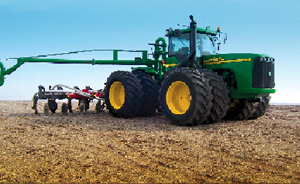 |
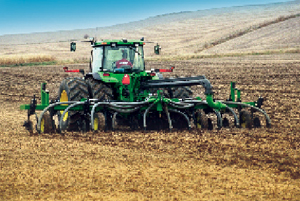
|
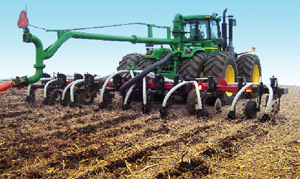
|
NPP II and its manure management and application partners are continuing to work to stay on top of what is required now in terms of regulations, and what is going to be required in the future. “I think record keeping is going to continue to be an issue,” says David Wittry. “That’s the main thing that DNR and the pollution control agencies are looking at—they want to make sure over-application is not happening. They’re looking for farms to show they are applying the correct amout of nutrient for the crop—and I don’t see that being a problem for us and NPP II. We’re there now.”
Wittry, who has a PhD in soil fertility research from Iowa State University, says the industry could see further developments in measuring crop nutrient removal, which could, in turn, have a direct impact on manure and nutrient application. “Right now, we can look at total amounts of nutrients removed from a field, but we need to work towards measuring individual areas within a field,” he says.
Related to that, he adds that there is great potential in variable rate manure application, especially for crops like alfalfa. “Developments like that could increase our efficiency on where and how we apply manure.”
As for the application side, Puck foresees new and different application equipment. “We’ve been in the business for 27 years and it seems like there’s a five to seven year equipment cycle, where you need to have a new set of equuipment or make equipment modifications.”
As in the past, this will be an equipment evolution, rather than an equipment revolution, he notes. Puck is hoping the new equipment will allow them to better deal with challenges such as terraces, irregularly shaped fields—a regular occurrence in western Iowa, he adds—and to help reduce the chance of over-application at ends and turnarounds with drag hose systems. “We’ve solved a lot of that already, we just need to take it another step to make it even better.”
Just as important as all that equipment is having committed employees to operate the equipment, and customers, like NPP II, who realize the value of employing modern equipment, Puck concludes. “You need all those pieces to bring it to the point where you are having the most beneficial environmental impact.”